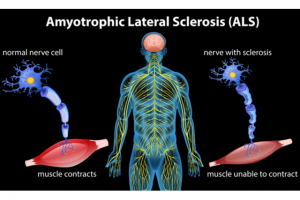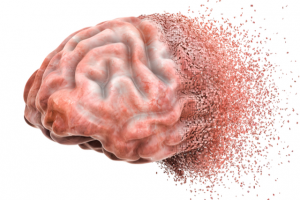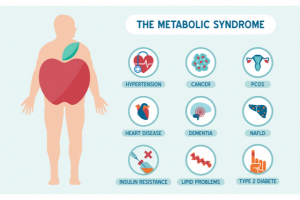CBD Oil & Chronic Pain: Does it Really Work?
Page Overview
Perhaps you've heard of people using CBD oil for chronic pain and, like most people, you wonder if it is effective. CBD can help with a wide range of physical ailments and pain is just one of them.
But how does it work and what are the benefits?
We're glad you asked, and you’ve come to the right place to get some medically reviewed answers.
Firstly, what is CBD?
CBD is short for cannabidiol, which is one of the most abundant cannabinoids in the cannabis and hemp plants. It has shown to be effective at helping to relieve symptoms of various disorders, including:
- Epilepsy
- Inflammation
- Depression
- Irritable Bowel Syndrome
- Bacterial infections
And you guessed it: it can also help with the management of chronic pain.
Many people are hesitant to use CBD because of the plants it is extracted from, but it is very different from tetrahydrocannabinol (THC), and it will not get you high. You could think of it as experiencing the best of the cannabis and hemp plants without having to worry about any unwanted side effects.
What are the Different Types of CBD?
There are three main types of CBD oil:
- Full Spectrum – Full spectrum CBD oil contains many cannabinoids, not just CBD. Its chemical profile is almost exactly the same as the hemp plant. This type does contain THC, but only in minimal amounts and it is not enough to cause euphoria.
- Broad Spectrum – Broad spectrum CBD oil is similar to full spectrum CBD oil in that it contains many cannabinoids, but unlike full spectrum CBD oil, it does not have any THC.
- CBD Isolate – CBD isolate – just like its name suggests – only contains CBD. There are no other cannabinoids, including THC, present.
All three forms of CBD oil can be very effective at helping various health conditions and which form you choose is mostly a matter of preference. People who cannot have any THC in their systems at all should opt for the CBD isolate, but many people who are tolerant of THC find they have the best outcomes with full spectrum CBD oils.
What is the Entourage Effect?
The entourage effect refers to the theory that when all of the compounds in CBD oil are taken together, they work better than when some are missing. This is why a lot of people prefer the full spectrum option when choosing a form of CBD oil.
All cannabinoids and the terpenes that are found in the cannabis and hemp plants were designed to work together. In a way, they play off of each other and this can amplify the effects of each individual component. Full spectrum CBD oil provides this synergistic effect. While people may also experience it to some degree with broad spectrum CBD, it isn't exactly the same because of the missing THC. Each individual needs to weigh up the potential benefit of THC with the risks involved, and this will vary depending on your unique make-up.
Our Top Trusted CBD Oil Pick
Joy Organics THC Free Gummies are our top CBD pick because of their potency and delicious flavor. Each gummy contains 10-25mg of organic CBD which helps you tackle whatever stresses life throws at you, on-the go. Interested shoppers can check out Joy Organics Gummies using the native shopping unit below. All purchases are made with and shipped directly from the brand.How Can Using CBD Oil Help with Chronic Pain?
Our bodies were created with an endogenous endocannabinoid system, or ECS. In very simple terms, our bodies produce cannabinoids naturally in response to certain stimuli. These naturally produced cannabinoids bind to receptors in the endocannabinoid system to help modulate the functioning of various systems including:
- Memory
- Appetite regulation
- Mood
- Sleep
- Fertility and reproduction
- Pain
But not everyone's body produces the right amount of cannabinoids. That is one reason why people often struggle with issues like chronic pain. Taking or using CBD oil can help to increase cannabinoid levels, bringing relief and healing.
When we think of pain, we tend to lump all pain together in one basket; however, pain can actually be differentiated into a few different types according to the causative mechanism. Sometimes pain is the result of more than one type of pain. This is typical in the case of cancer, where you may experience visceral, somatic and neuropathic pain all at once. CBD oil has a beneficial impact on all of the different types of pain.
Neuropathic Pain
Neuropathic pain is pain derived from trauma or injury to nerves. It is different to typical inflammatory pain in that it doesn’t usually respond to anti-inflammatories or simple analgesics. This makes it very difficult to manage, especially when it is chronic. People often experience neuropathic pain as an intractable, burning pain that can be severe enough to be disabling.
Some examples of neuropathic pain include:
- Diabetic neuropathy
- Shingles
- Post herpetic neuralgia
- Phantom limb pain
Visceral Pain
People experience visceral pain when the pain receptors in their organs are activated. This may be as a result of trauma or pathology, for example, pressure on an organ from a tumour. Visceral pain is extremely vague. Because it is not localized, it has been very difficult for researchers to understand. Sometimes it can feel like pressure or an aching feeling. Some people describe it as a “deep squeeze.”
Somatic Pain
Somatic pain occurs when pain receptors (called nociceptors) in the skin, muscles, skeleton or connective tissue are activated. A typical example of somatic pain would be the pain from a sprained ankle. It is different from visceral pain in that it affects the nerves that are located in the skin and deep tissues of the body.
The job of nociceptors is to pick up sensations in the body that are related to temperature, swelling, pressure and vibrations. When the nociceptors pick up these signals, they send messages to the brain alerting the brain that something is wrong. We experience this subjectively as pain.
What Types of CBD Oil are Recommended for Chronic Pain?
There are two main formulations of CBD oil that we recommend to help people with chronic pain. They are oral CBD and topical CBD.
Oral CBD Oil
Oral CBD is usually taken in tincture/drop form. The drops are placed under the tongue and held there for several seconds. This allows the CBD to enter the bloodstream rapidly.
Topical CBD
Topical CBD is usually a cream or salve that is applied directly to the skin. This can be good for people who are experiencing pain as a result of a muscle injury or strain.
What Type of CBD is Best for You?
If you're not sure what type of CBD might work best for you, that's OK! Our helpful CBD Product Finder Tool can get you started.
We highly recommend full spectrum CBD oil for chronic pain, although if you are hesitant about the effects of THC you will still derive benefit from the CBD isolate. For best results, try using a combination of topical and oral CBD oil. Let us know how it works for you!
Sources:
- Reiss, Carol S. “Cannabinoids and Viral Infections.” Pharmaceuticals (Basel). 2010 Jun; 3(6): 1873–1886. doi: 10.3390/ph3061873 https://www.ncbi.nlm.nih.gov/pmc/articles/PMC2903762/#
- American Society of Anesthesiologists Task Force on Chronic Pain Management: “Practice Guidelines for Chronic Pain Management.” Practice Parameter April 2010, ASA Publications. https://pubs.asahq.org/anesthesiology/article/112/4/810/10691/Practice-Guidelines-for-Chronic-Pain-ManagementAn
- Cherny, Nathan et al. “Oxford Textbook of Palliative Medicine (5 edn).” Oxford University Press, Mar 2015. Published online: Apr 2015 DOI: 10.1093/med/9780199656097.001.0001 https://oxfordmedicine.com/view/10.1093/med/9780199656097.001.0001/med-9780199656097-chapter-134
- Carver AC, Foley KM. Types of Pain. In: Kufe DW, Pollock RE, Weichselbaum RR, et al., editors. Holland-Frei Cancer Medicine. 6th edition. Hamilton (ON): BC Decker; 2003. https://www.ncbi.nlm.nih.gov/books/NBK12991/
Health Conditions

CBD for Colitis: Can Colitis Symptoms Be Managed with CBD?
Learn More

Crohn’s Disease and CBD Oil: Current Research and Benefits
Learn More

Gut Health and CBD Oil: A Complete Guide
Learn More

Liver Disease & CBD Oil: Risks, Benefits, & Research
Learn More

ALS & CBD Oil: Promising Research on Cannabinoids & Buying Tips
Learn More

Neurodegeneration & CBD Oil: Can It Rebuild & Reverse the Damage?
Learn More

Kidney Disease & CBD Oil: Research on Symptoms & Possible Benefits
Learn More

Metabolic Syndrome & CBD Oil: Addressing Multiple Conditions
Learn More

HIV/AIDS and CBD Oil: Managing Symptoms and Side Effects
Learn More
6 Smart Questions to Ask BEFORE You Buy CBD
Get the Ultimate CBD Buyer’s Guide and you won’t look at CBD the same way again!



 search
search